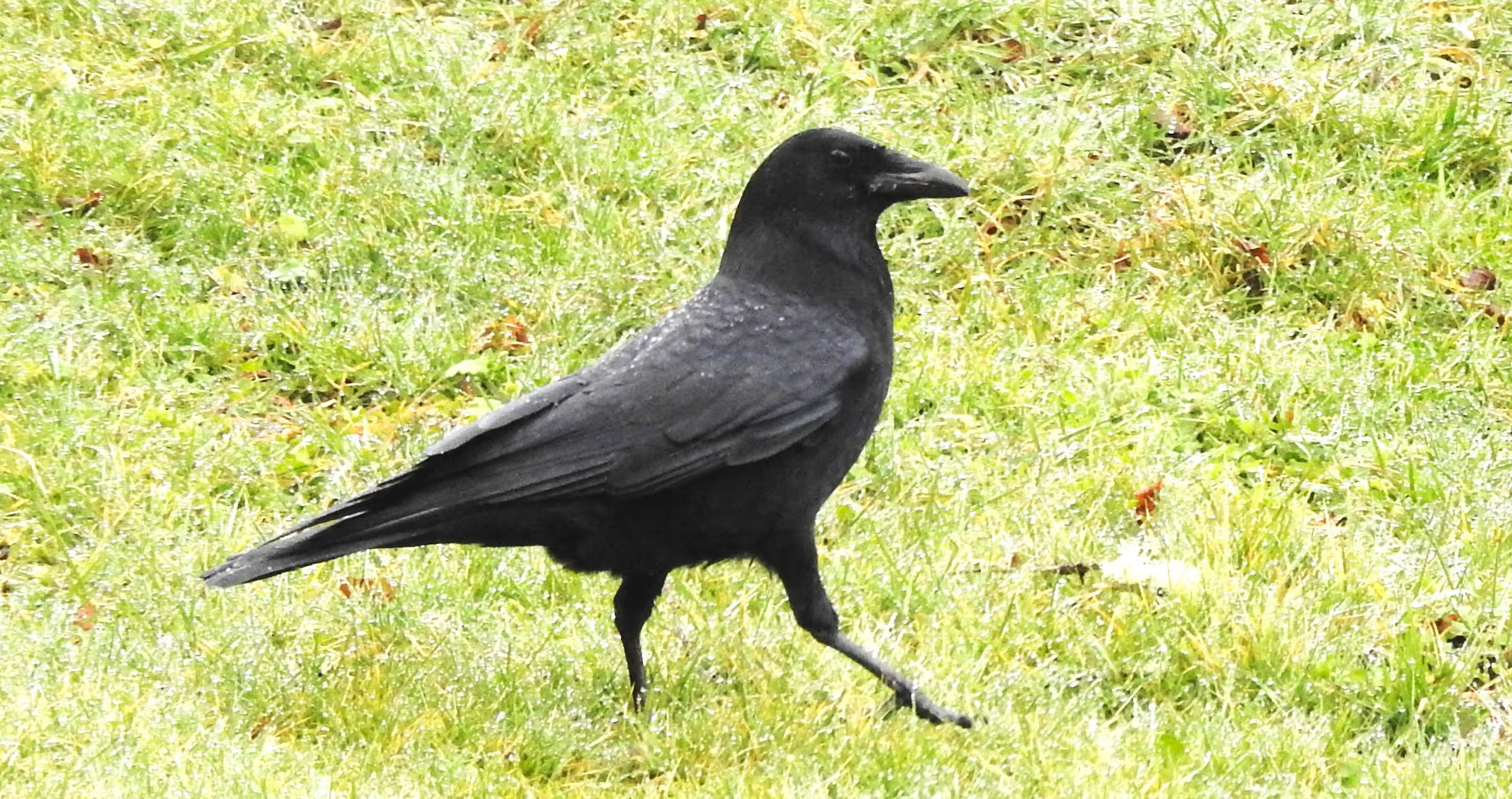Why do Crows Hop?


Why do crows hop rather than fly when on the ground? I do not know, I am not a bird psychic, but if you pay attention, you will see that crows and gulls and other large birds that spend a lot of time on the ground will hop or walk as long as possible before flight becomes necessary. On the other hand, small birds that may alight on the ground to feed, frequently take to the air when danger approaches.
One possible reason for delayed flight in larger, intelligent birds that frequent the ground is related to the energetics of flight. Flying takes a lot of energy and the great diversity of bird species (around 10,000) results in a great diversity of flight strategies. Regardless of the strategy, birds have evolved to fly with hollow bones (for most birds), streamlined bodies, wings, feathers, and perching hind legs. These adaptations allow for less weight, aerodynamic shapes, and an ability to hang onto branches. In addition to these adaptations, bird also need high amounts of energy. And energy comes in the form of oxygen.
We know that most (aerobic) organisms require oxygen to live, but do you know why? In brief, oxygen when combined with sugar (glucose as its most basic form) produces energy molecules. Over a trillion of these energy molecules are made by most individual animals each day and they power everything from thinking and eating to moving. Mammals use these molecules to power walking and running, fish use the molecules for swimming, and birds use the molecules to power flight. Most forms of movement require a large amount of energy that is used to carry messages from the brain to the muscles that then work with the skeleton to produce walking, for instance.
Flight, however, requires much more energy. Birds have large pectoral or flight muscles that connect to the wings to produce flight. When birds are perched in trees, on telephone poles, or along cliffs, taking off does not require much energy as the birds use the forces of gravity combined with flapping their wings to produce the initial stages of flight. Taking off from the ground requires a lot more energy since the initial stages of flight have to counteract gravity rather than use gravity. This is especially true for larger birds that have greater weight.
As you can imagine, birds must require much more oxygen for flight to produce all of that energy. Most land animals obtain oxygen by breathing it in from the air. As part of this gas exchange, carbon dioxide is breathed out, often mixing with oxygen during exhalation. When we run, we need more oxygen so we breathe more rapidly and may even become out of breath. That is because we need the oxygen to power our running and we have only so much capacity in our lungs. When we exercise regularly, we may increase our lung capacity but only to a certain limit. Birds need much more lung capacity to take in and store oxygen for flight. So how do they do this?

Birds have a pair of lungs like most vertebrates, but they have a secondary system composed of nine air sacs. Their lungs combined with these air sacs work to create a single direction of air flow through birds. This means that birds have fresh, highly oxygenated air in their lungs as compared to mammals in which oxygen is combined with carbon dioxide in our lungs. Birds have the most efficient lungs of all vertebrates (fish, amphibians, mammals, and other reptiles) producing higher amounts of oxygen that they retain longer in their bodies, providing them with greater energy for use in flight.
Given the large size of crows and ravens that spend a lot of time on the ground, it makes sense to conserve energy as long as possible before taking flight. Crows and ravens, as part of the Corvidae family of birds are also highly intelligent. So, observe them next time you walk up to a murder of crows or a conspiracy of ravens and see how long it takes for them to make the decision to fly. The more energy they conserve through this process, the more energy they have for other activities such as feeding and mating. Those individual birds that are best at choosing when to not fly and conserve energy may pass more of their genes along to their offspring, creating the next generation of highly intelligent birds that my look you in the eye before hopping deliberately out of your way.
Carnegie Museum of Natural Histor. 2022. How do crows breath with their butts. https://carnegiemnh.org/how-birds-breathe-with-their-butts/. (Last accessed 8 January 2022).
Avian respiration. 2022. http://people.eku.edu/ritchisong/birdrespiration.html (Last accessed 8 January 2022).
© Barbara Hayford, January 2023
Touch whale bones, examine shipwreck artifacts and connect with the coast's living history.

Support our mission, get involved in educational programs, or contribute through donations and volunteering.